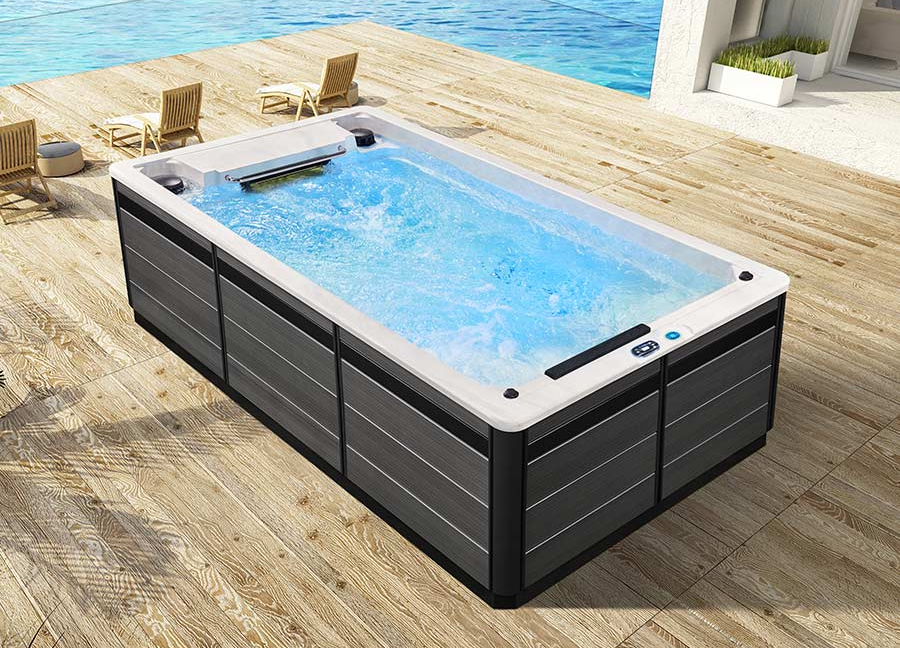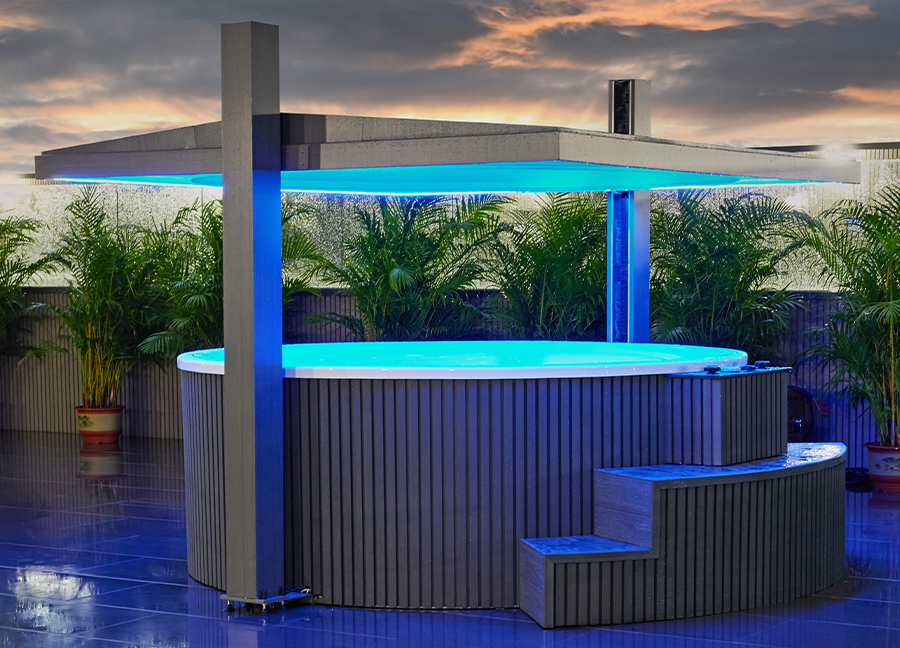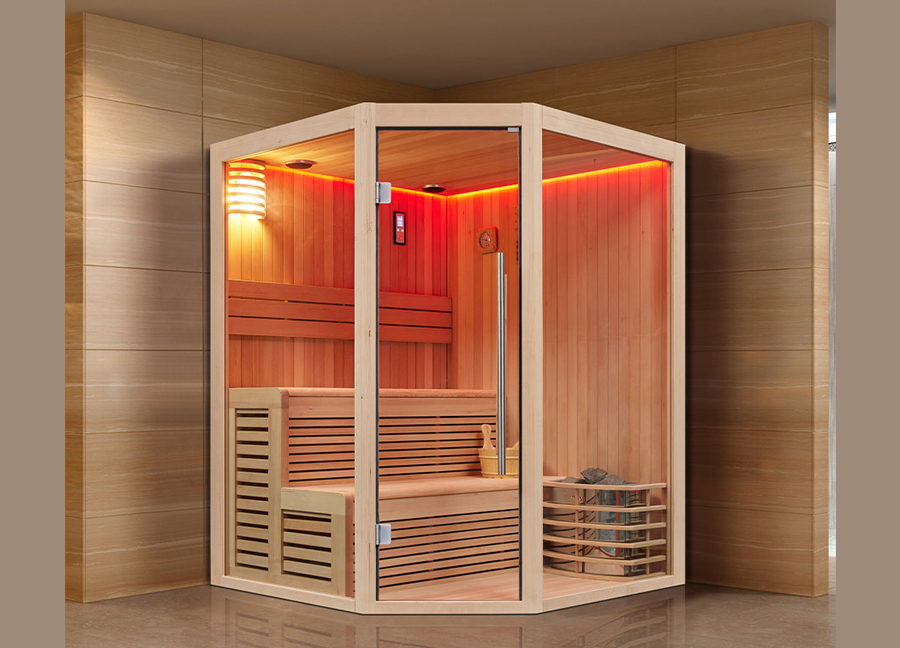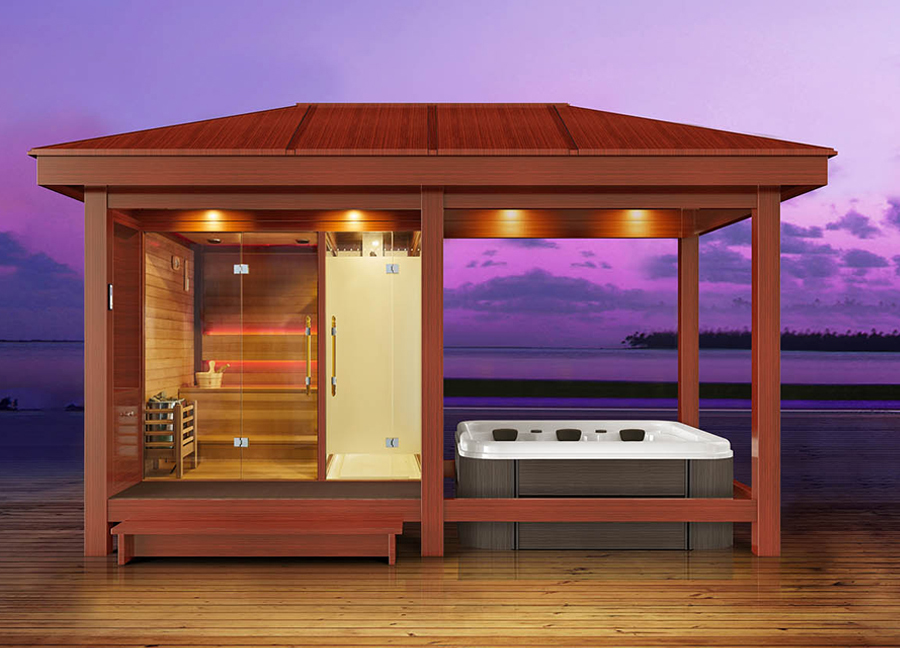In modern home bathrooms, hydromassage bathtubs, a high-end option that combines bathing and relaxation, are increasingly popular. A built-in pump system pumps water into the jets, where it massages the body with high-pressure water, achieving muscle relaxation, blood circulation, and relaxation.
Compared to ordinary bathtubs, hydromassage bathtubs are more complex, and their internal piping, pumps, and nozzles are more susceptible to bacterial growth, scale accumulation, and clogged impurities. Improper cleaning can not only negatively impact the user experience but can even pose health risks.
Therefore, it's crucial to master the scientific and systematic cleaning techniques for hydromassage bathtubs. This article will detail the key points of hydromassage bathtub cleaning, covering cleaning principles, daily maintenance, deep cleaning procedures, tool selection, safety precautions, and troubleshooting common problems. This will help users master the correct methods to ensure long-term cleanliness and safe operation.
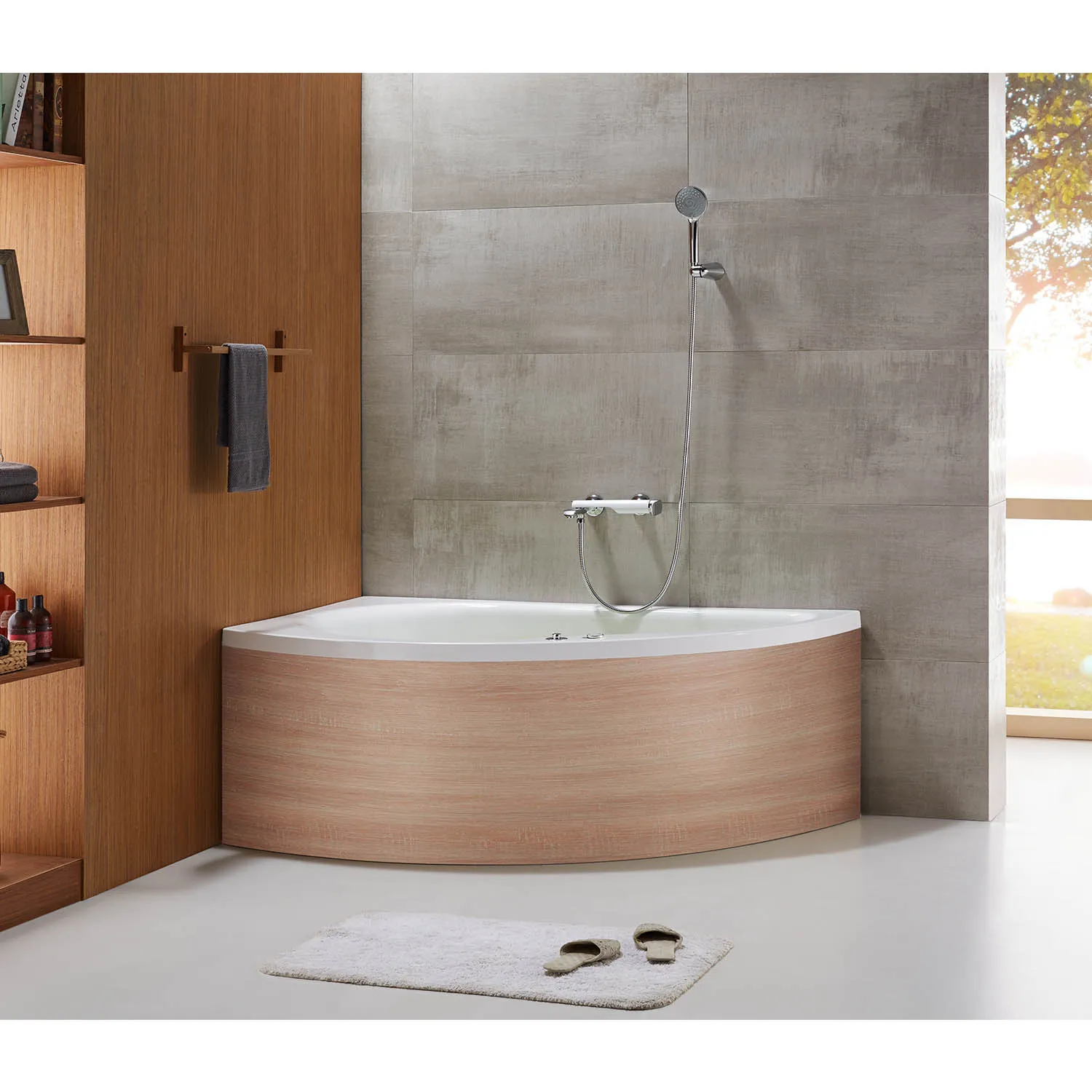
Why do hydromassage bathtubs require special cleaning?
1. Complex system structure, prone to harboring dirt and grime
A hydromassage bathtub has multiple components, including a water pump, pipes, nozzles, and a return system. These areas are exposed to constant humidity and high temperatures, making them prone to the accumulation of:
· Scale (calcium and magnesium ion deposits);
· Soap and shower gel residue;
· Skin exfoliation;
· Mold and bacterial growth.
If these deposits are not cleaned promptly, they can not only clog the hydromassage system and reduce efficiency, but can also contaminate the water and even cause health risks such as itchy skin and respiratory problems.
2. The internal structure is not exposed, making it difficult to detect with the naked eye
Unlike ordinary bathtubs, the nozzles, return holes, and piping systems of hydromassage bathtubs are mostly hidden within the tub, making them more difficult to clean. Simply wiping the tub surface often fails to meet true hygiene standards.
Therefore, targeted and structured cleaning methods are essential to achieve thorough cleaning.
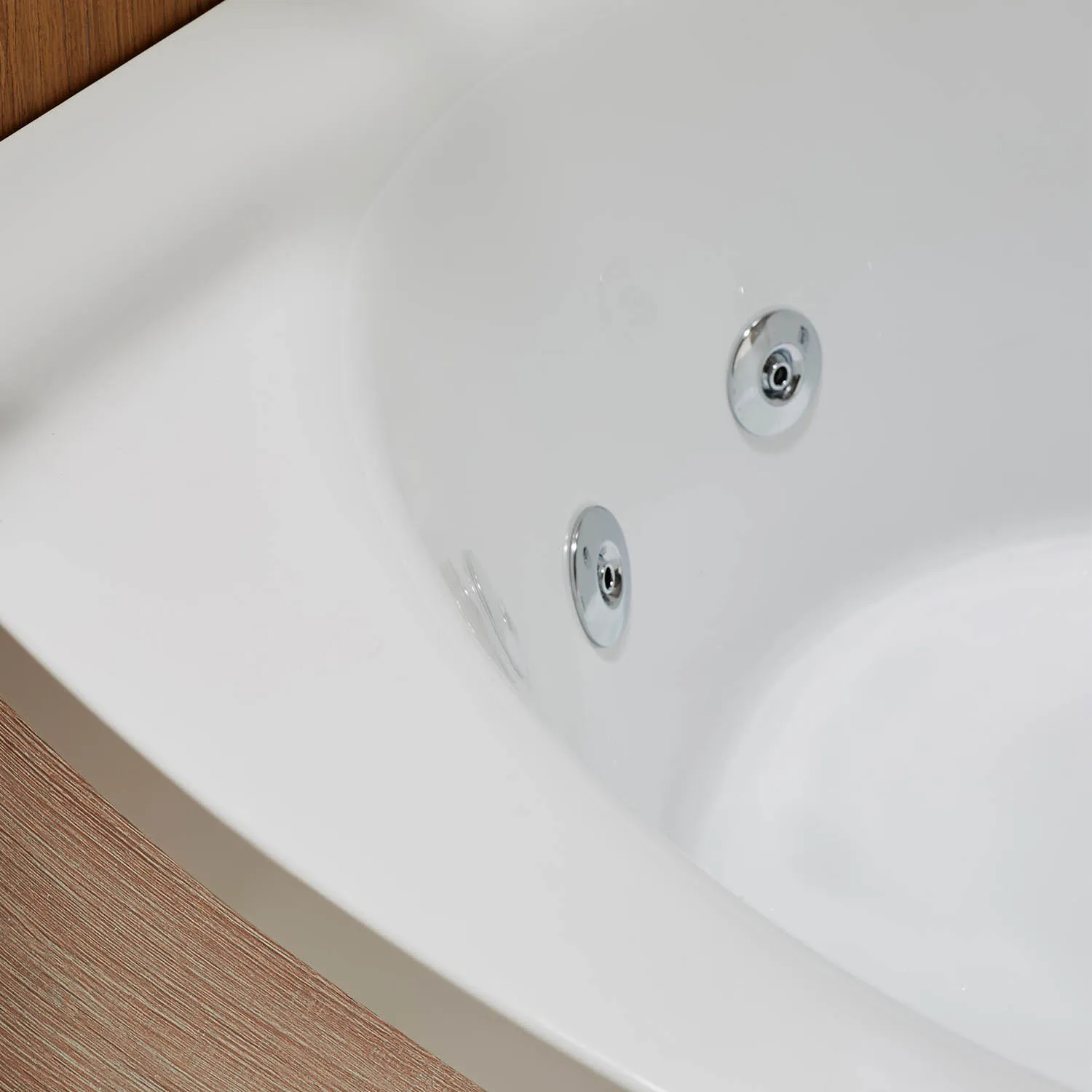
Daily Maintenance and Cleaning Steps for Hydromassage Bathtubs (Applicable After Each Use)
A hydromassage bathtub should be cleaned briefly after each use to reduce deposits and delay the accumulation of dirt. The recommended daily steps are as follows:
1. Drain the Bathtub
After use, drain the hydromassage bathtub completely to ensure that no residual water remains in the system to prevent water quality deterioration.
2. Rinse the Bathtub Walls with Clean Water
Use a handheld showerhead to rinse the bathtub walls, nozzles, handrails, and bottom to remove any residual foam.
3. Wipe the Bathtub Surface
Use a soft, lint-free cloth (such as a microfiber towel) dampened with warm water to wipe the interior. Avoid using abrasive cleaning tools or steel wool to prevent scratching.
4. Clean the Exterior of the Nozzles
Use a soft-bristled brush to scrub the outer ring of each nozzle to prevent clogging caused by soap or skin oils.
5. Ventilate and Dry
Maintain ventilation in the bathroom, and turn on the exhaust system if necessary to accelerate evaporation and reduce the humidity that fosters bacterial growth. Daily cleaning may seem simple, but it's fundamental to ensuring long-term, clean operation. Consistently cleaning after each use will significantly extend the life of your equipment and reduce the frequency of deep cleanings.
Hydraulic Massage Bathtub Deep Cleaning Procedure (Recommended Monthly)
Even with proper daily maintenance, your hydromassage bathtub still requires regular, systematic deep cleaning, especially of hidden areas like the internal pipes and pump. The following is a professional and effective deep cleaning procedure:
Step 1: Prepare Tools and Cleaners
Required tools include:
· Neutral bathtub cleaning solution or a dedicated waterway disinfectant;
· White vinegar or citric acid (to soften scale);
· Baking soda (to neutralize odors);
· Plenty of clean water;
· Soft brush and rag;
· Disposable gloves;
· Empty spray bottle (for diluting and spraying).
Precautions: Avoid using strong acids or alkalines to avoid damaging the interior of the hydromassage bathtub or corroding the rubber components.
Step 2: Add water and mix with the solution
· Close the drain valve;
· Fill the hydromassage tub with warm water (approximately 40°C/112°F) to a level approximately 5-10 cm above the jet outlets;
· Add 1 cup of white vinegar and 1/2 cup of baking soda (or add a cleaning agent according to the instructions);
· Stir briefly to dissolve and distribute the solution evenly.
Step 3: Start the hydromassage system and run it for 10-15 minutes
Turn on all the jets in the hydromassage tub and allow the pump system to circulate the cleaning solution through the pipes, pump, and jets to dissolve any buildup of scale and bacterial buildup.
You will notice the following:
· Yellow or off-white foam may float on the water surface.
· Turbidity or the presence of impurities in the water indicates a self-cleaning system.
Step 4: Turn off the system and let it soak for 15-30 minutes
Allow the solution to continue soaking to soften stubborn dirt and allow the disinfectant to further kill bacteria.
Do not manually agitate or interrupt this process.
Step 5: Run the system again for 5 minutes
Restart the hydromassage tub pump system to completely drain any remaining softened contaminants into the tub water.
Step 6: Drain and Rinse Thoroughly
Turn off the system, completely drain the hydromassage tub, and refill it with clean water (just enough to cover the jets). Run the system again for 3 minutes to remove any remaining detergent.
Repeating this rinse twice is optimal.
Step 7: Clean the tub and jets
After draining, wipe the tub walls and each nozzle outlet with a damp cloth. If necessary, use a cotton swab or toothbrush to gently scrub the nozzle crevices.
Finally, wipe dry with a dry cloth, ventilate, and allow to air dry.

Specific Cleaning Tips for Key Areas of the Hydromassage Tub
1. Jet Nozzle
· Spray the jet nozzle with a vinegar solution (a 1:1 ratio of white vinegar to warm water);
· Scrub the crevices with a soft-bristled brush to prevent hardened scale buildup;
· Clean every two weeks for optimal results.
2. Water Pump and Water Inlet
· Generally cannot be disassembled and requires recirculating water cleaning.
· Ensure the drainage is unobstructed. If you notice increased noise or reduced water flow in the hydromassage tub, check for blockages as soon as possible.
3. Bottom Drain
· Remove any blockages with tweezers or a brush.
· Regularly check for accumulated debris such as hair and soap scum.
Safety Precautions for Cleaning a Massage Bathtub
When cleaning a massage bathtub, please observe the following safety guidelines:
Notes | Contents |
| Operate with power off | Be sure to unplug any electrical equipment before cleaning to prevent electric shock |
| Do not use strong corrosive cleaning agents | Strong acids, strong bases, or chlorine bleach can damage pipes, nozzles, and the tank's materials |
| Wear gloves when operating | Avoid prolonged contact of cleaning agents with skin, which may cause irritation |
| Operate in a well-ventilated area | Ensure good ventilation to avoid inhaling chemical fumes |
| Do not disassemble the pump body | Do not disassemble the pump or main control system without specialized tools and knowledge to avoid malfunctions |
Recommended Cleaning Frequency for a Massage Bathtub
To ensure the safety, hygiene, and smooth operation of your massage bathtub, the following cleaning frequency is recommended:
Cleaning Details | Recommended Frequency |
Rinse and wipe after each use | After each use |
| Brush the nozzles | Every two weeks |
| Clean the piping system | Monthly |
| Check the pump and filter | Every one to two months |
| Deep clean the entire system | Quarterly or earlier depending on frequency of use |
If it is used frequently or in areas with hard water, the cycle can be shortened appropriately.
Common Mistakes and Corrective Actions for Massage Bathtub Cleaning
Incorrect practices | Risks | The Right Way |
| Clean only the tank body without cleaning the internal system | Bacterial growth, odor | Use a circulating water cleaning method to clean the interior |
| Use 84 disinfectant or high-concentration bleach | Corrosion of materials, health hazards | Use a mild, neutral detergent |
| Scrub the acrylic surface with steel wool | Surface scratches, gloss loss | Clean with a soft cloth or sponge |
| Close the lid if ventilation is not possible | Increased humidity, promoting mold growth | Maintain good ventilation and allow the interior to dry |
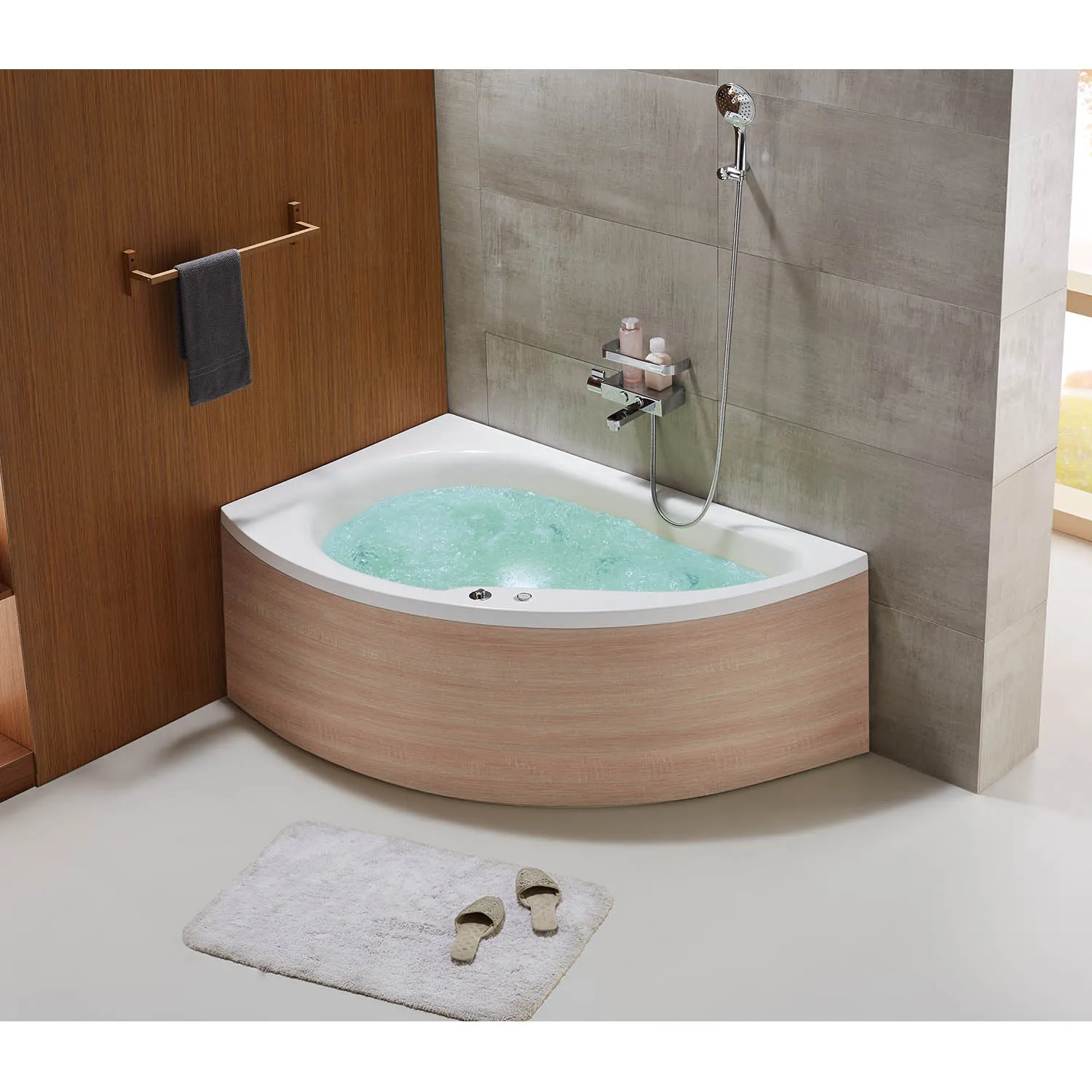
Are Your Products Designed for Commercial Use Like Hotels or Resorts?
Yes. Our outdoor spa, massage bathtub, and sauna room models are engineered for heavy usage in commercial settings such as hotels, gyms, and resorts. We offer energy-efficient features, anti-slip finishes, and anti-corrosion materials.
Businesses can request bulk orders, and we provide attractive discounts for long-term supply contracts. MEXDA’s factory-direct prices help you maintain quality while managing costs.

